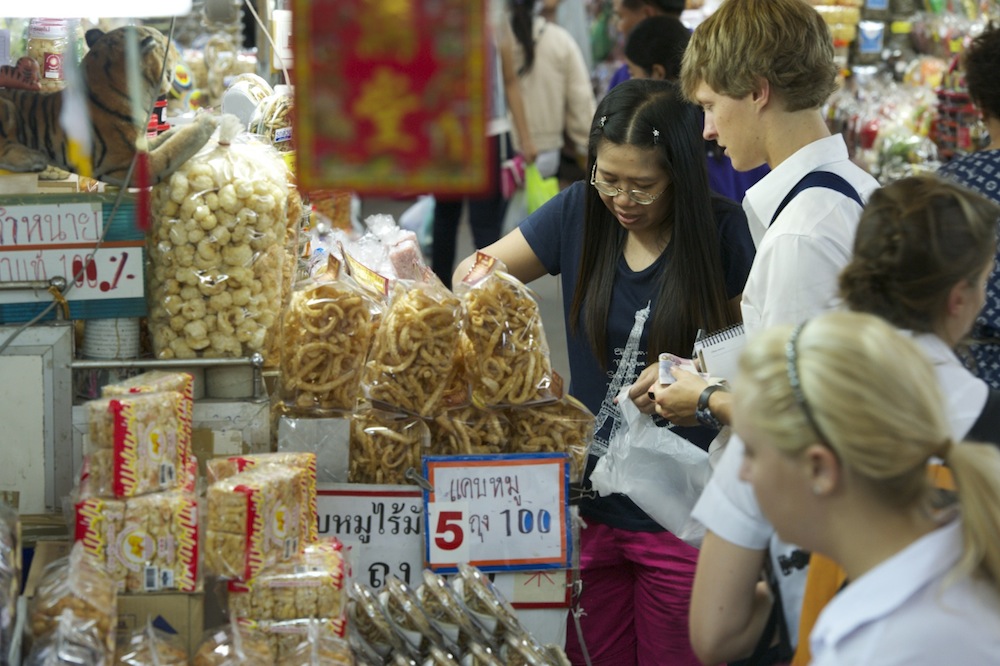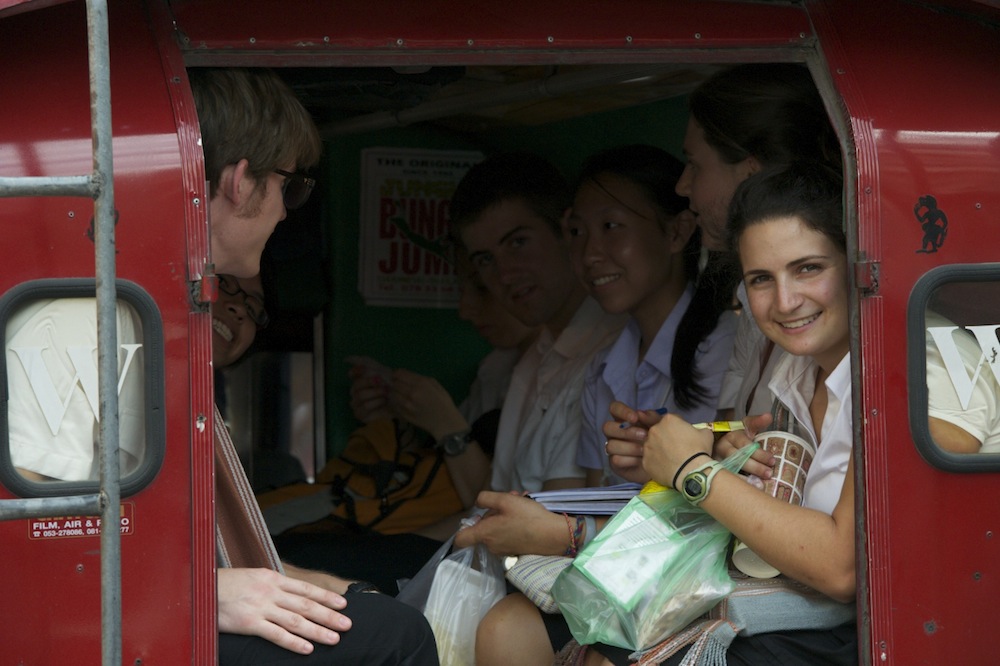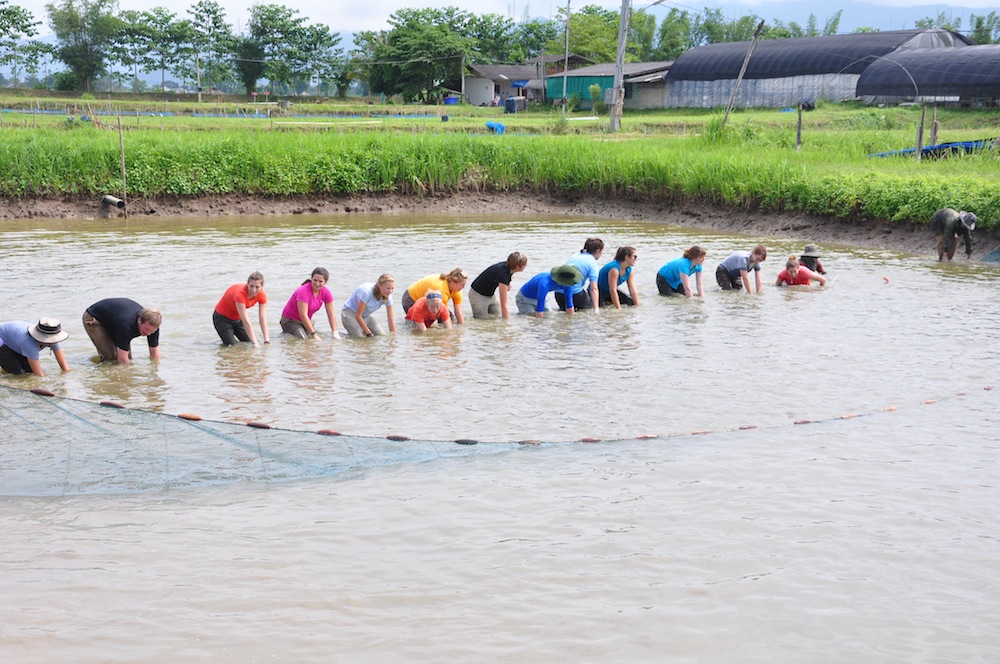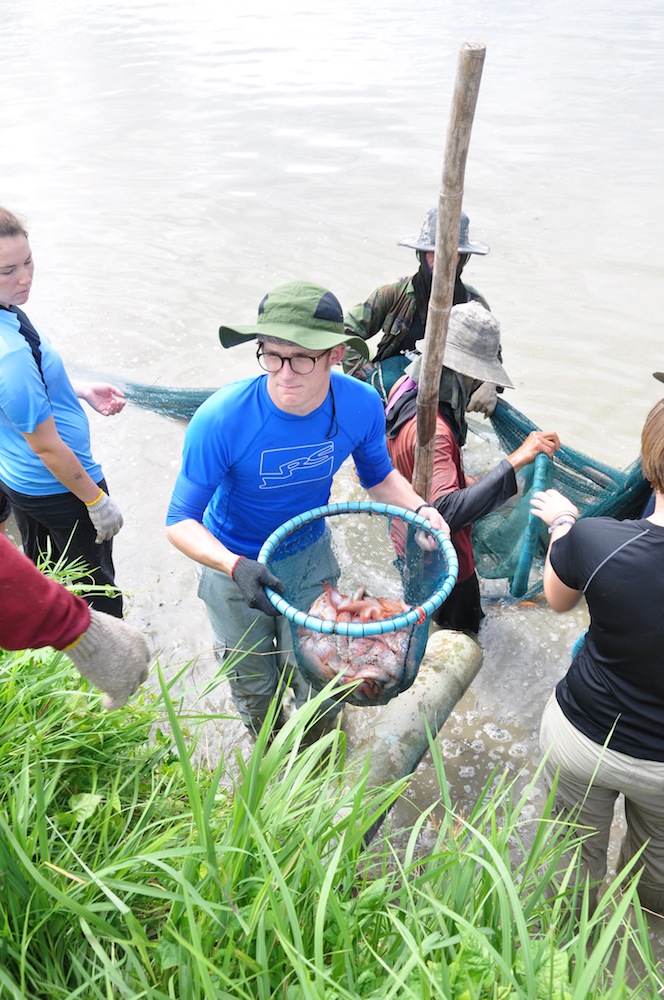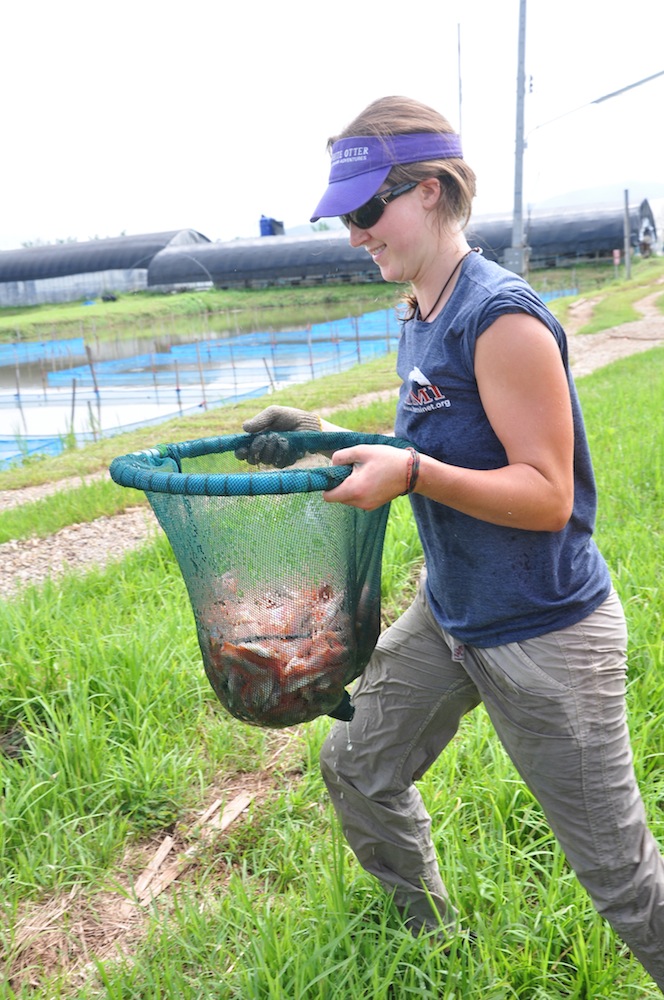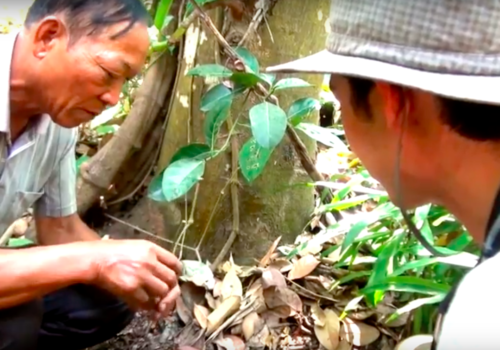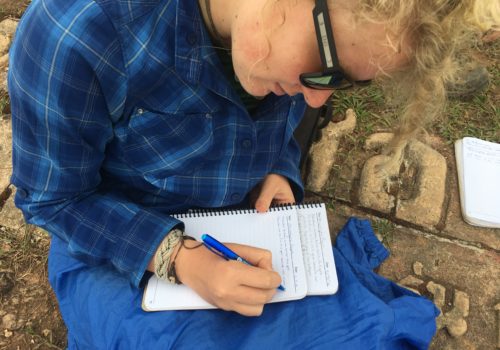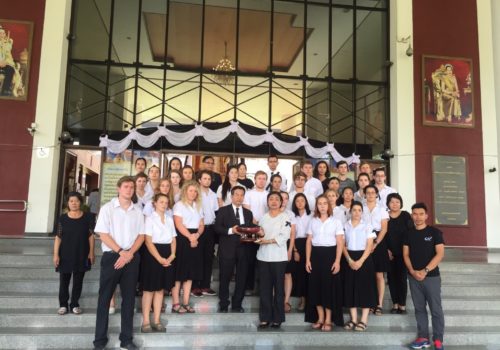Almost a month after arriving in Chiang Mai, students have started to adjust to life in a foreign country, living with host families, communicating in Thai and the academic and physical rigors of the ISDSI program. So, they were prepared for another busy week, which is exactly what they had. During the week, students went on yet another field trip as part of their Foundations course, this time to Kad Luang (or Warorot Market) in Chiang Mai to survey the market scene.
Kad Luang is the largest and oldest market in the city where you can find pretty much anything from traditional Thai clothing and snacks to modern day electronics and everything in between. Armed with an ever-increasing Thai vocabulary and field journals, students browsed the market selections and prices as well as observed how the market is divided into different sections and the customers that patronize the various sections. They came away with a lot of great observations and field notes as well as some new treats to taste and share with their families.
The busy week ended with a trip to the Northern Development Farm (NDF), a great example of sustainable aquaculture about an hour outside of Chiang Mai. The NDF, an excellent example of a well functioning NGO in the region, raises and sells tilapia fry to individual farmers and to other NGOs and businesses. In addition to providing a sustainable means of income generation for their customers, the NDF farm also provides worker-training programs, and place of research for those wishing to study aquaculture.
After a viewing the hatchery areas, students engaged in two main hands-on activities: harvesting the eggs and transferring juvenile red tilapia to new ponds. The group harvesting eggs headed to the breeding ponds where staff sectioned off small corners so the fish could easily be caught in nets. Upon catching a fish students checked to see if they were females, and if they were, opened their mouths to check for eggs. Once any available eggs had been collected, the fish were returned to the larger section of the pond (as were all the males and females without eggs).
Meanwhile, the other group took a large net and pulled it across the entire length of the pond to collect the juvenile tilapia in the net before transferring them, via baskets, to a truck and finally to a new pond. Following a delicious lunch of freshly caught and fried tilapia, the students switched groups so that they would all have a chance to try their hand at each skill.
Even though the staff made both of these tasks look relatively easy, students quickly realized how challenging it really is to catch and handle adult tilapia and work together to drag a net across the pond while trying to keep your footing in the mud. By the end of the day, though, all the students had given each job a try with varying degrees of success.
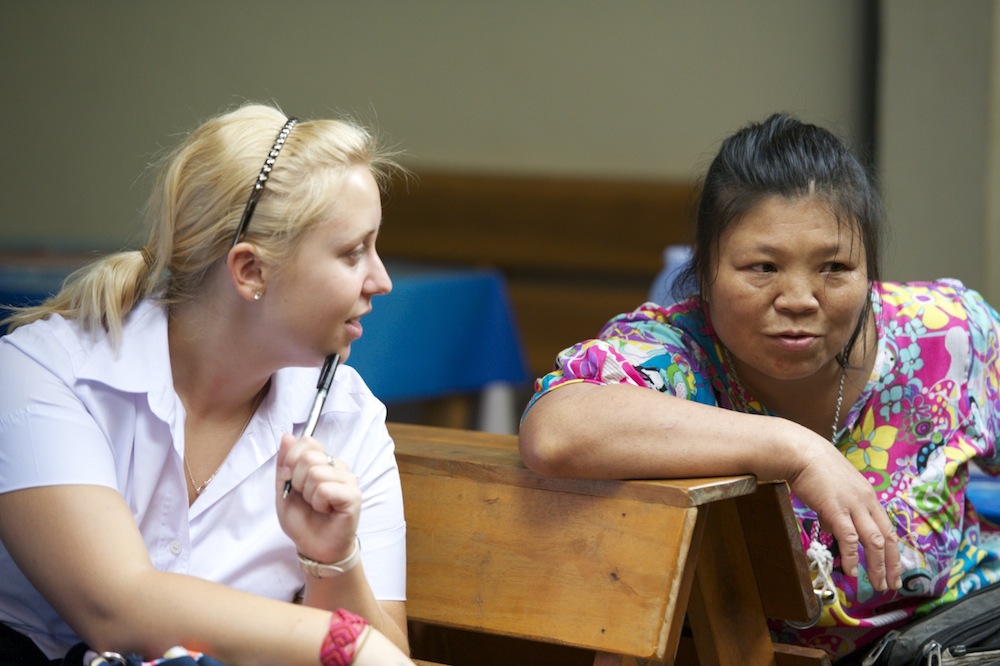
Meredith finds a moment to chat with one of the vendors at Kad Luang to get learn more about the market.
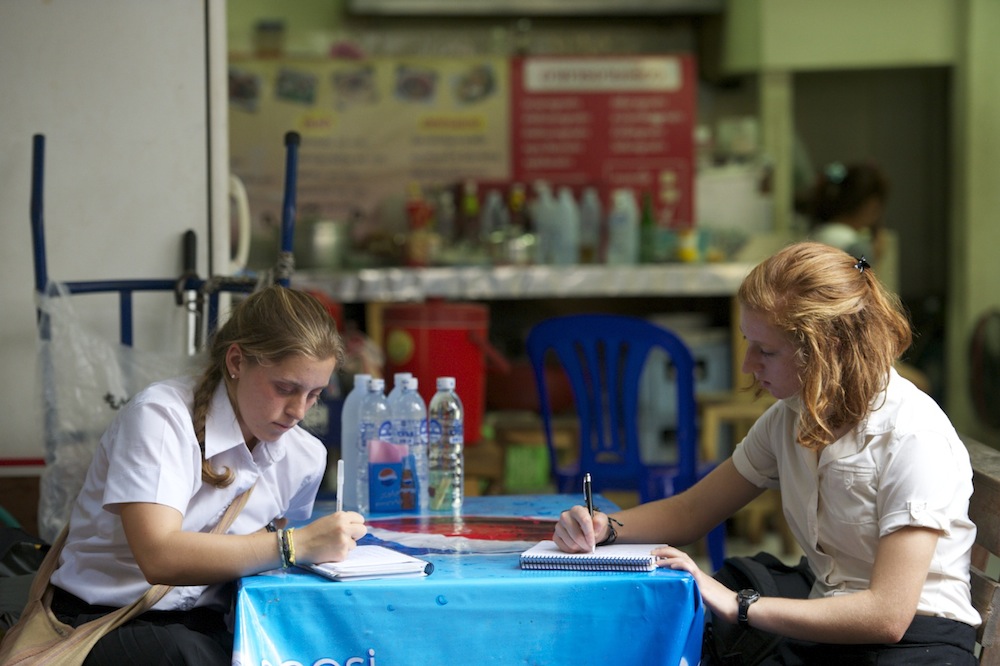
After wondering the market and collecting information, Grace and Erin find a good place to sit, observe, and take notes, of the market surroundings.
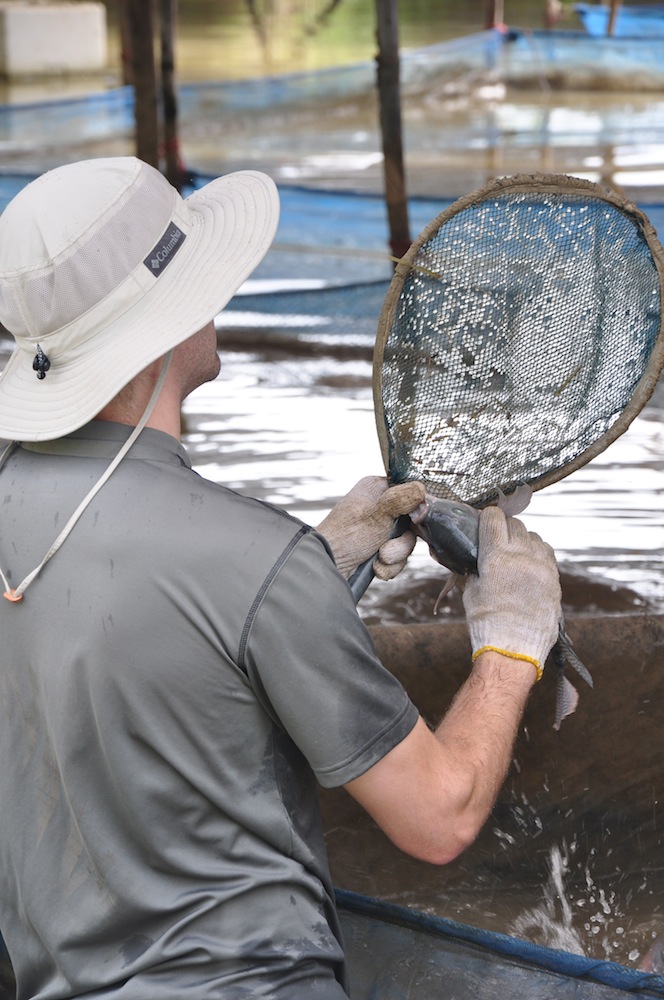
Andrew shows his aptitude for catching and handling the tilapia as he checks a female fish for eggs.
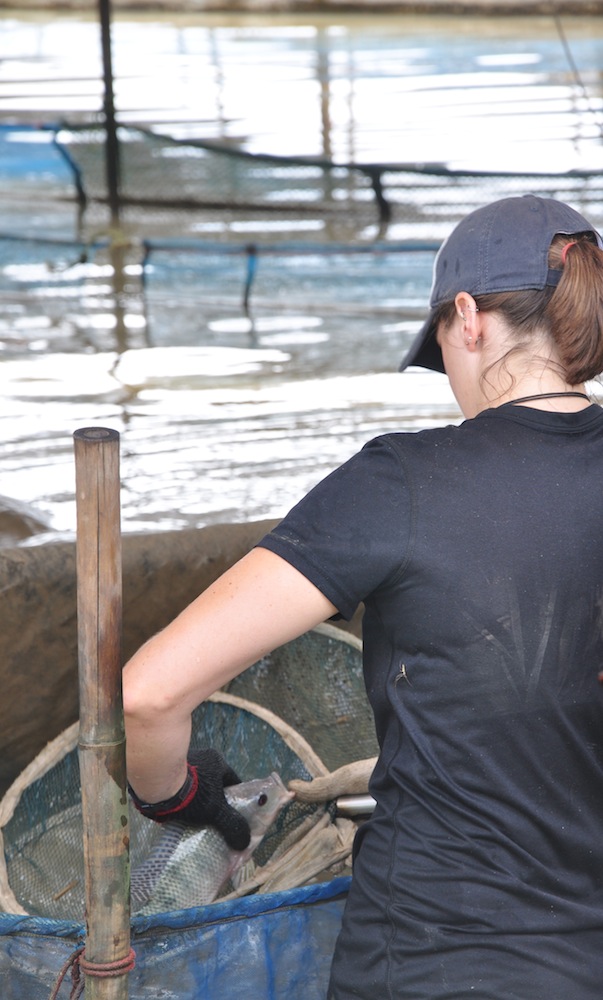
Not to be outdone by her classmate, Jennica keeps pace with Andrew as she checks yet another female fish for eggs.
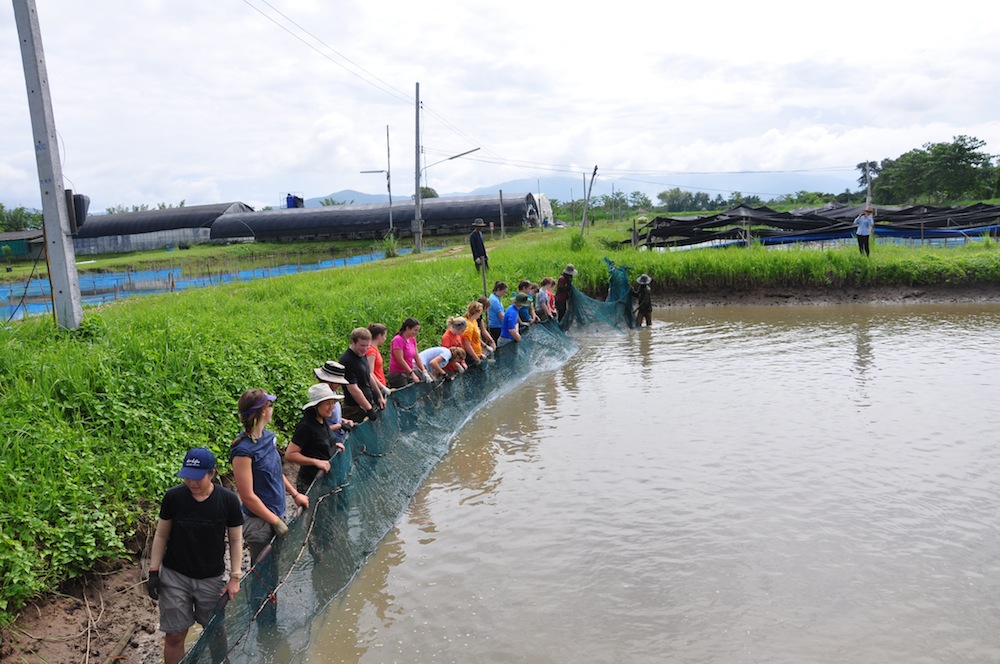
Having made it to the end of the pond students securely hold the net filled with juvenile tilapia until the staff can direct them with the next step in the transfer.
